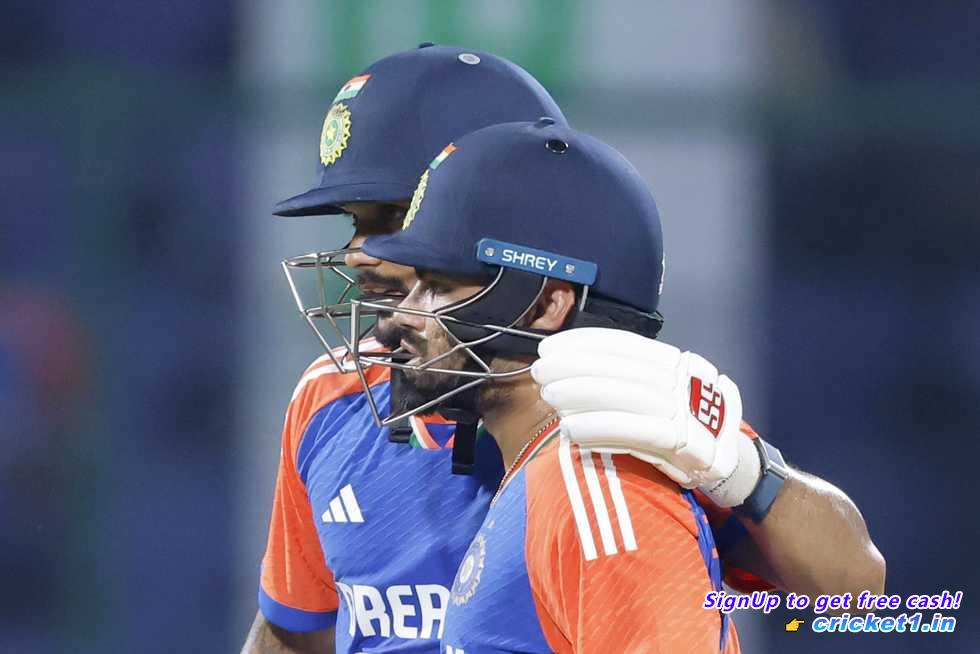
Adelaide 2022 seems like a tale from an era long past, a time when India’s batting in T20 cricket was far more conservative, more painstaking in its approach. The Indian team of that period is markedly different from the bold and audacious lineup seen in Delhi during the second T20 International against Bangladesh in 2024. The lack of a semifinal pressure, undeniably, and coming in with a series lead, set favorable conditions, but it was India’s calculated yet audacious response to an early batting crisis that captured the cricketing world’s attention.
On that day in Delhi, the Indian team’s reaction to the loss of not one, but three wickets within the PowerPlay phase was a defining moment. While previously such a position might have triggered a cautious, defensive effort to steady the innings, this time around there was no reluctance to play freely. At the critical junction of 45/3 at the end of the PowerPlay, India charged forward, adding 120/1 in the middle overs (7-15), marking their third-highest tally during this phase in T20 International history.
At the heart of this striking comeback was a consistent mantra preached by the Indian leadership team from the day after the Adelaide setback, a defeat that underscored their lag behind in the evolving dynamics of T20 batting strategies. The leadership change from Rohit Sharma and Rahul Dravid to the current leadership of Suryakumar Yadav and Gautam Gambhir heralded an era of attacking cricket.
“The message has been loud and clear. You just go out and express yourself – the same thing that you do in the nets, the same thing that you’ve done for your franchise, what you’ve done for your state,” Suryakumar noted after India’s emphatic 86-run win. “When you come here, just the jersey changes, the emotion changes, rest everything remains the same. Just be yourself.”
The standout performers during the match were Nitish Reddy and Rinku Singh. Both players became the embodiment of their captain’s advice, executing an impeccable 108-run partnership off 49 balls during the middle overs. A turning point came with Mahmudullah’s no-ball, which spurred Nitish into a display of innovative stroke play, a spectacle of clean hitting and calculated aggression.
The 21-year-old batter from Andhra Pradesh showed immense maturity and prowess, smashing seven sixes in total, surpassing Bangladesh’s team tally merely by himself. Rinku Singh added three more sixes to the total, pushing India’s tally to 15, marking a new high in terms of sixes hit by a team against Bangladesh in a T20I.
This transformation has not come overnight. It required the lingering sting of a World Cup defeat and the subsequent efforts to recalibrate and rejuvenate India’s T20 methodology.
. With a World Cup win subsequently under their belt, their aggressive intent is now more pronounced and effective.
“I should give credit to the captain and coach,” Nitish expressed during the post-match presentation. “They told me to play the aggressive way only, the way I played in the IPL. They gave me the license. I took a bit of time [at] first and that no-ball came and I felt this is my time.”
This newfound winning attitude wasn’t a gamble on reckless batting. Nitish, who had nervously crawled to 13 off 13 on a tricky pitch, waited for the opportune moment to strike, turning an over from offspinner Mehidy Hasan into a windfall, amassing 26 runs from it.
Reflecting on his strategy and partnership with Rinku, Nitish shared insights with Jio Cinema, post-match: “We didn’t plan too much. We were three down and in a pressure situation, but we always plan during dressing room meetings to play fearless cricket. That’s what helped me, I guess. I took my time, and once I saw the over where I needed to attack, that’s where everything changed.”
Even the latter stages of India’s innings, where India traded wickets for aggressive runs, underscored a philosophy of exuberant cricket. Hardik Pandya and Riyan Parag came in to maintain the aggressive momentum, despite the looming threat of losing all wickets. India eventually ended their innings at 221 for nine, a testament to their unwavering aggressive approach.
This victory should serve as a source of great satisfaction for Indian cricket, particularly as it showcased the younger generation’s embrace of an aggressive, attacking strategy. In a fiercely competitive cricket scene, many young players might gravitate towards cautious play to safeguard their spots. However, by adopting fearless cricket, they challenged this norm, signaling that India’s T20 strategy is firmly in new, capable hands. This isn’t just safe cricket; it’s smarter, bolder, and learned from the harsh lessons of the past. The Indian squad of 2024 is firmly wise from the past experiences of 2022 in Adelaide, and they have emerged with a braver outlook, where safe hands were never the plan.

